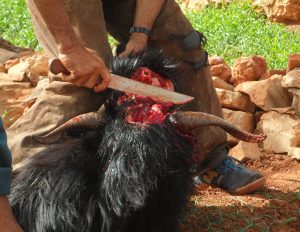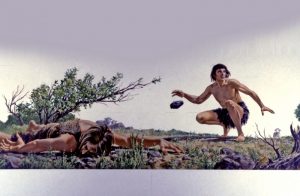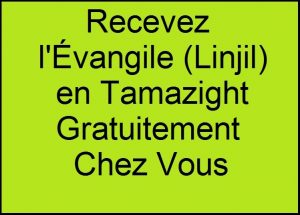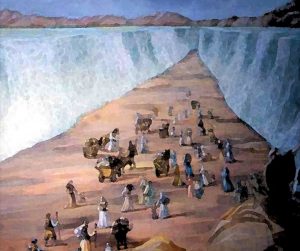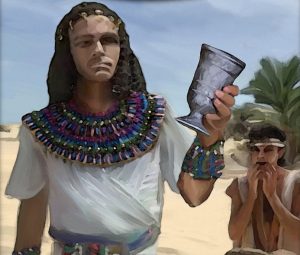Cliquez sur la question pour trouver la solution.
1. Nzerx-ac-tt-i-n: La ttawi awal, ur da tsawal.
J’en ai une pour toi: J’apporte une parole mais je ne parle pas. Qui suis-je?
2. Nzerx-ac-tt-i-n: Ibbi yaman ur immiɣ.
J’en ai une pour toi: J’ai traversé l’eau sans me mouiller. Qui suis-je?
3. Nzerx-ac-tt-i-n: Ur da ttaru ɣas s isfuruḍen.
J’en ai une pour toi: Je n’accouche que par des coups de pieds. Qui suis-je?
4. Nzerx-ac-tt-i-n: La-s iddal iswi, ur da-tt ittasi ulɣem.
J’en ai une pour toi: Un simple van peut me couvrir, mais un chameau ne peut me porter.
Qui suis-je?
5. Nzerx-ac-tt-i-n: Ilula-d s tamart, immut bla tamart.
J’en ai une pour toi: Je suis né avec une barbe, mais je suis mort sans barbe. Qui suis-je?
6. Nzerx-ac-tt-i-n: Tegdem da ur tenɣil.
J’en ai une pour toi: Je me suis renversé sans déverser. Qui suis-je?
Amazigh culture has a tradition of riddles. These riddles are told with a specific formula, somewhat like the English: “What’s black and white and read all over? A newspaper.” First, an introductory phrase is given, announcing “I’m going to tell you a riddle.” Then one or two short statements are made. These are not framed as questions but as statements. However, it is implied that the listener must then guess what object is being described by the cryptic statements.
The introductory phrase is:
Nzerx-ac-tt-i-n
nzerx + ac + tt + i + n
first person indirect object direct object “i” sound “n” of farness
singular “past” pronoun: 2 m.s. pronoun: 3 f.s. added for
conjugation of “to you” “it,” that is, pronunciation
the verb “nzer” the riddle
Notice the presence of the indirect and direct object pronoun as well as a direction particle all with one verb. The only thing that changes in this introductory phrase is the indirect object pronoun, which may be ac , am , awen , or awent depending on who is being addressed. The verb nzer here functionally means “to tell a riddle” and technically means just “to tell”: “I tell it to you.”
There are some regional variations: some areas use the masculine third person singular direct object pronoun t (without the doubling of the consonant) instead of the feminine tt ; when that is used sometimes the i for pronunciation is not added; some regions use slightly different indirect object pronouns (like ak , with a hard or a fricative “k” sound, instead of ac ); and sometimes there are some slight changes to the verb. Some regions use ɣ instead of x for the first person singular verb ending. Some regions also modify some of the verb consonants or use a different verb. There are at least five variations: bzer , zunzer, zuzzer , ḥeji , and qqen.
So, you say the introductory phrase. Then you say the cryptic statements. You can leave it at that, or you can add a phrase like: Mag-gmes? or Matta ntta? (What is it?) or Ini mag-gmes or Ini matta ntta (Say what it is.). Remember if the “it” you are talking about is feminine or plural, these questions change to things like:
May tmes? or Matta nttat? etc., according to the gender and number of the “it.”
Most of these traditional riddles are virtually impossible for an outsider to guess correctly. They often involve intricate details of agricultural and nomadic life.
Ddan-d iwaliwen-ad zeg E. Laoust, Cours de Berbère Marocain: Dialecte du Maroc Central, Paris, 1939, p. 269.


